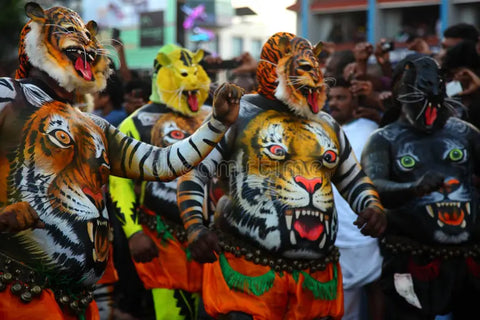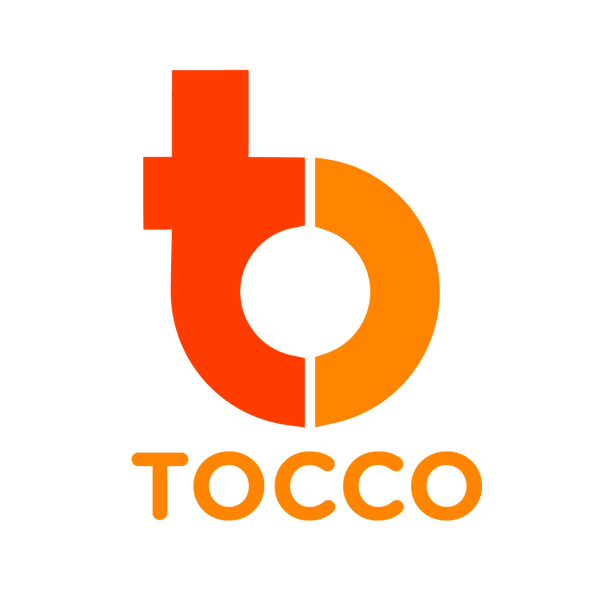
Onam: Bridging Generations Through Culture, Food, and Festivities
Share
Aarpooooo…. Irrooo… Irrooo…. Irrooo….
The festive cheers to invite King Mahabali to the land of coconuts for the most looked after celebration in Kerala has begun. It is that time of the year, where in Kerala, a tapestry of vibrant colors, cultural heritage, and agricultural abundance is unfolding to commemorate the festivities of Onam. Onam is a harvest festival celebrated in the malayalam month ‘Chingham’ while the roots of the celebration is also intertwined with mythology. Onam is more than just a festival; it's a reflection of Kerala's rich history and values, where the entire state irrespective of the religion they belong to, celebrates the festival with unity.
King Mahabali
The mythological story of Onam revolves around the legendary King Mahabali and his benevolent rule in the ancient land of Kerala. His generosity and kindness are even celebrated through a song, which is believed to have been written in the 16th century or before which the people of Kerala sing during Onam day. Here’s a small excerpt from the same:
Maveli Naadu vaanidum kaalam
Manushyarellarum onnu pole
Aamodathode vasikkum kaalam
Aapathangarku-mottilla thaanum
(When Maveli, our King, rules the land,
All the peoples form one casteless race.
And people live joyful and merry;
They are free from all harm)
The song also goes on to explain how people lived in good health and prosperity leaving no room for theft, or deceit. King Mahabali was not only a just ruler but also a devotee of Lord Vishnu. His devotion was so deep that Lord Vishnu took notice of it and decided to test his virtue and humility. To test Mahabali's humility, Lord Vishnu took on the form of a dwarf Brahmin named Vamana and arrived at Mahabali's kingdom during a grand event known as the "Vishnu Yajna," where the king was known to fulfill the wishes of his subjects. Vamana approached King Mahabali and asked for a piece of land that he could measure with three steps. Amused by the dwarf Brahmin's request, Mahabali agreed. But as soon as he granted the wish, Vamana's form began to expand. With his first step, he covered the entire earth; with the second, he encompassed the heavens. With no more land left, Mahabali offered his own head for Vamana to place his third step. Impressed by Mahabali's humility and devotion, Lord Vishnu revealed his true form and granted him a boon. Mahabali, who was deeply attached to his kingdom and people, requested to visit his kingdom once a year, which is the day celebrated as Onam where people await the homecoming of Mahabali.
Onam Festivities
Onam marks the end of the monsoon season and the beginning of the harvest period in Kerala. As the rice paddies sway with ripe grains and the fields brim with fresh produce, the festival serves as a tribute to the farmers' hard work and dedication. It's a time when the whole community gathers to celebrate the bountiful harvest, expressing gratitude for the sustenance the land provides. There’s a popular saying, ‘Kaanam vittum onam unnanam’, which translates to, ‘one must have Onam lunch, even by selling one’s land, if need be’. This is also why Onam is celebrated in grandiose.

The festivities of Onam start way before the main day, ‘Thiruvonam’. ‘Atham pathinu ponnonam’ is a phrase in Malayalam, translating to ‘the tenth day from Atham is Thiruvonam’ showing the significance of each day leading to the main day of celebrations. Atham is the day when Mahabali is believed to begin his preparations to return to earth and visit his people and kingdom. ‘Pookkalam’, the beautiful and intricate floral decoration that is an integral part of Onam starts on this day, and every day from Atham leading to Thiruvonam, the size of the pookkalam gets bigger with additional layers which ends up with the biggest one on Thiruvonam day. The designs are a way of expressing respect and admiration for the king, and they add to the festive and celebratory atmosphere of the occasion. In olden times, the kids in the house wake up early in the morning and go to each house with a basket to collect the freshly plucked flowers that make the pookkalam for that day. In recent times this has moved to a convenient way of buying flowers from the market.
Traditional Attire
Gifting ‘Onakkodi’ or purchasing new clothes is an inevitable part of Onam celebrations. This happens at least a week before Thiruvonam, and it’s mostly the traditional attire which is the kasavu mundu and kasavu saree that’s purchased to wear for Onam. The traditional clothes in off-white with golden borders signifies peace, spirituality, and harmony. The combination of gold and white is considered auspicious and symbolises purity, elegance, and prosperity. As Onam is a festival celebrating a cultural heritage and celebrating the pride through the state’s traditions, everyone wearing off-white and golden celebrates cultural identity too. Even now, it’s such a beautiful sight to see men and women going for work or studies in the traditional attire during the days leading to Onam. The shopping may not end with clothes. A lot of them buy jewellery during this time, especially right after a good harvest. The gold prices sometimes go a record high during this time.
Onam Sadhya Feast 
A few days before the day leading to Onam, the families visit each other, to celebrate the main day together. They clean the homes as a gesture of welcoming Mahabali to their home. The shopping for ingredients for Sadhya also happens during this time. Speaking of Sadhya, Onam is incomplete without this elaborate traditional feast which is an integral part of Onam. The Onam Sadhya is more than just a meal; it's a culinary and cultural experience that reflects the essence of Kerala's traditions and values. It's a way of celebrating the harvest season, expressing gratitude for the abundance of crops, and coming together as a community to enjoy a sumptuous feast. The exact number of dishes in a Sadhya can vary, but it often includes around 20 to 30 different items. Serving and eating the Sadhya is an art. It is served on a freshly cut banana leaf, and eaten with hands, by sitting on the floor cross legged.
Uthradam day, also considered as the first Onam, is the day when Mahabali is believed to arrive on earth. A lot of last-minute shopping, and eagerness for the big day happens during this day. Uthradam, Thiruvonam, Avittam, Chathayam are the four days where Onam is celebrated. Thiruvonam is the main Onam day, in which Mahabali is believed to visit the homes of his subjects. Pookalams are complete, everybody dresses up in full galore, and gets together to celebrate the day with sadhya, games and more!
Traditional Games 
Games also play a great role in making the day eventful. All of them are played in large groups which makes everyone participate and have a lot of fun. ‘Vadamvali’ or Tug of War, a classic team game where two groups compete against each other by pulling on opposite ends of a rope always tops the list of the best played games. It's not only a test of strength but also a great way to encourage team spirit and friendly competition. This is also the time where you may spot people painted as tigers for ‘Pulikali’. ‘Pulikali’ is a traditional folk-art form and performance that is an integral part of the Onam celebrations in Kerala, India. The word "Pulikali" translates to "play of the tiger," and the performance involves people painting themselves as tigers and dancing to lively music and beats. Pulikali has its origins in the Thrissur district of Kerala and is believed to have started in the 18th century. Pulikali is often performed on the fourth day of the Onam festival, known as ‘Nalaam Onam’, on Chathayam day. It is a unique and colorful spectacle that adds vibrancy to the festive atmosphere of Onam.
The festivities usually come to an end with the Chathayam day, bidding farewell to King Mahabali and everyone going back to their routine, but with the anticipation of celebrating it with more colour next year.
Snake Boat Race

It may also be important to know the significance of ‘Aranmula vallamkali’, the snake boat race that happens every year in Aranmula, a heritage village on the banks of river Pamba in Pathanamthitta district. The boat race happens 2 days after Chathayam and is the most ancient and revered boat race of Kerala. This boat race is part of the larger cultural fabric of Kerala and is deeply rooted in the region's mythology and history. Legend has it that a temple festival was being celebrated in honor of Lord Krishna, and devotees took their traditional snake boats to accompany the deity's idol during a procession. Over time, this evolved into a grand boat race that coincided with the Onam festivities. Thousands of spectators from across the state and beyond gather along the banks of the Pampa River to witness the thrilling race and partake in the festive atmosphere.
This year (2023), Onam is celebrated on the 29th of August and the celebrations have already begun. Enjoy this Onam with your loved ones, wearing the traditional kasavu saree and mundu, and of course the grand Sadhya! Let the year bring you prosperity and harmony!
Wishing a happy Onam to all… Onashamsakal!
